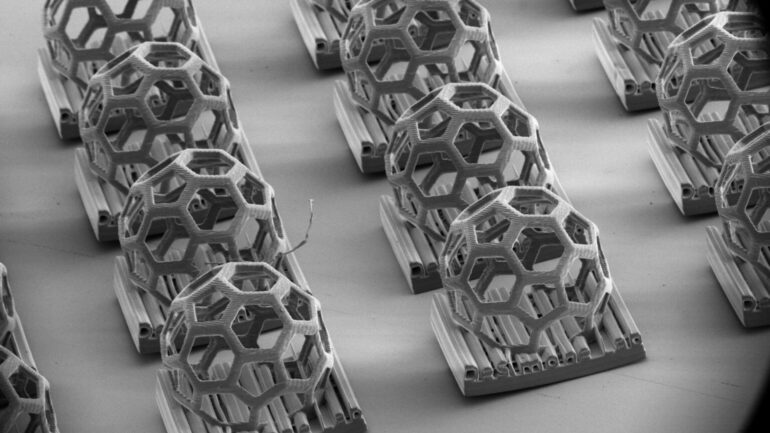While 3D printing at the macroscale level has become mainstream, a team of researchers at Stanford University has achieved a remarkable breakthrough in microscale 3D printing. Their innovative process allows the printing of up to one million microscale particles every day, opening up new frontiers in fields ranging from microfluidics and vaccine delivery to microelectronics.
Continuous Liquid Interface Production (CLIP) Technology
3D printing million microscale particles is made possible through the continuous liquid interface production (CLIP) technology developed by the DeSimone Lab at Stanford. CLIP utilizes ultraviolet (UV) light to rapidly cure resin into desired shapes, employing an oxygen-permeable window that acts as a “dead-zone,” preventing the resin from curing and sticking to the window while allowing intricate features to be cured onto the particle.
Roll-to-Roll CLIP (r2rCLIP): A Game-Changer for Mass Production
The researchers have taken CLIP technology to new heights by developing a roll-to-roll setup, termed r2rCLIP, for mass production of uniquely shaped microscale particles. This setup sends a carefully tensed film to the CLIP printer, where customizable shapes are printed. The film then moves through various stages, such as washing, curing, and removal of the shapes, on an assembly line. Once the shapes are removed, the film can be rolled back up, enabling a continuous and efficient production process.
Table of Contents
3D printing million microscale particles: Revolutionizing Industries
Unleashing the Potential of Microscale 3D Printing
Unlike conventional approaches, where batches of printed particles need to be individually removed slowly and laboriously, r2rCLIP can print a staggering one million particles daily. This breakthrough in 3D printing technology has the potential to revolutionize various industries by enabling the mass production of highly detailed, customizable microscale particles for a wide range of applications.
The Future of 3D Printing: From Process to Industry
According to Joseph DeSimone, the professor of Translational Medicine at Stanford and the lead researcher of the team, the field of 3D printing is moving beyond the processes involved and evolving into an industry itself. “r2rCLIP is a foundational technology,” DeSimone stated. “But I do believe that we’re now entering a world focused on 3D products themselves more so than the process. These processes are becoming clearly valuable and useful. And now the question is: What are the high-value applications?”
With Stanford’s groundbreaking achievement in 3D printing million microscale particles, the future of 3D printing is poised to become an industry in its own right, with vast opportunities for innovation and exploration across diverse sectors. This remarkable advancement paves the way for the mass production of microscale components, enabling new frontiers in fields such as microfluidics, vaccine delivery, microelectronics, and beyond.

